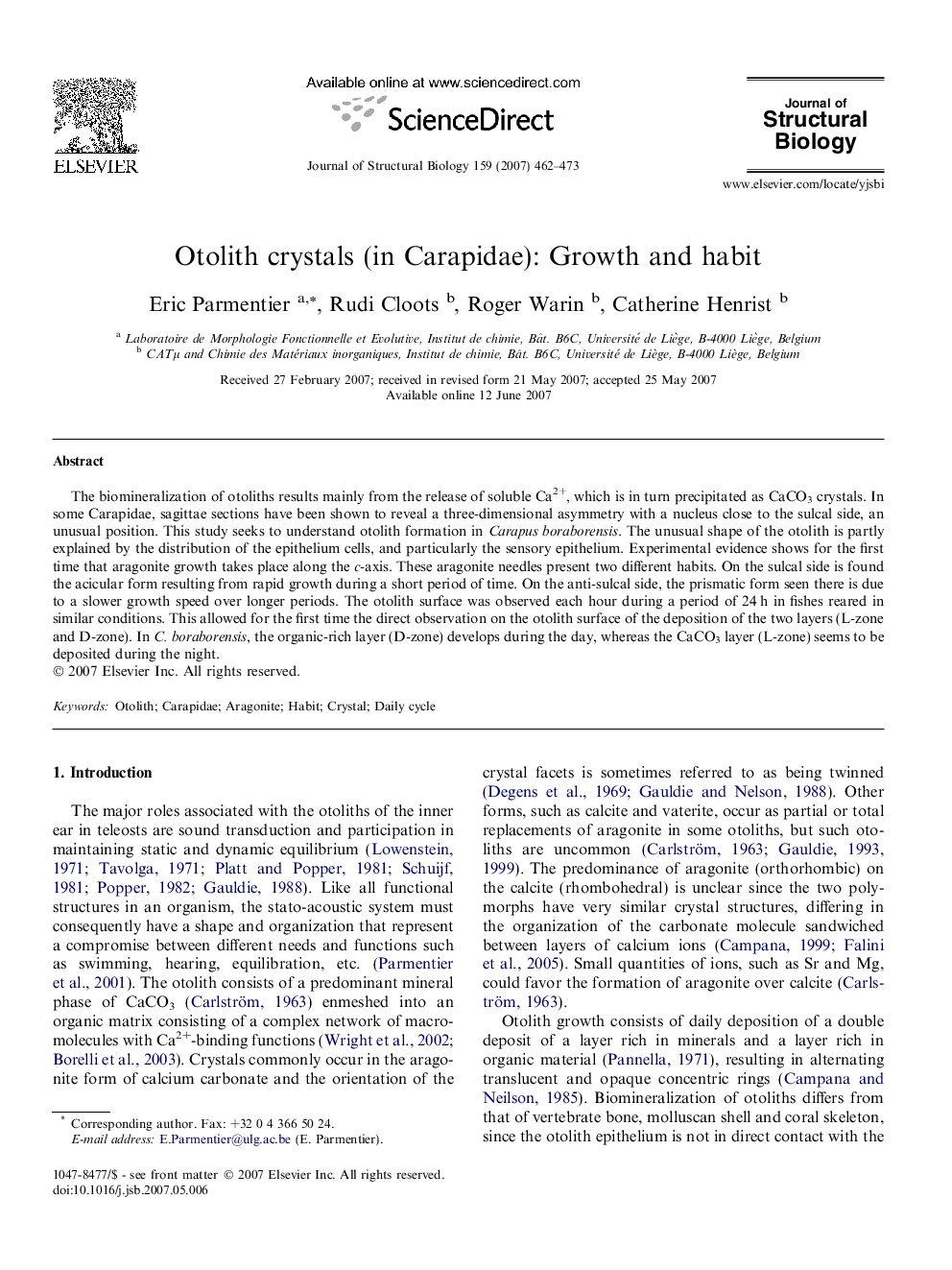| Article ID | Journal | Published Year | Pages | File Type |
|---|---|---|---|---|
| 2829296 | Journal of Structural Biology | 2007 | 12 Pages |
Abstract
The biomineralization of otoliths results mainly from the release of soluble Ca2+, which is in turn precipitated as CaCO3 crystals. In some Carapidae, sagittae sections have been shown to reveal a three-dimensional asymmetry with a nucleus close to the sulcal side, an unusual position. This study seeks to understand otolith formation in Carapus boraborensis. The unusual shape of the otolith is partly explained by the distribution of the epithelium cells, and particularly the sensory epithelium. Experimental evidence shows for the first time that aragonite growth takes place along the c-axis. These aragonite needles present two different habits. On the sulcal side is found the acicular form resulting from rapid growth during a short period of time. On the anti-sulcal side, the prismatic form seen there is due to a slower growth speed over longer periods. The otolith surface was observed each hour during a period of 24Â h in fishes reared in similar conditions. This allowed for the first time the direct observation on the otolith surface of the deposition of the two layers (L-zone and D-zone). In C. boraborensis, the organic-rich layer (D-zone) develops during the day, whereas the CaCO3 layer (L-zone) seems to be deposited during the night.
Related Topics
Life Sciences
Biochemistry, Genetics and Molecular Biology
Molecular Biology
Authors
Eric Parmentier, Rudi Cloots, Roger Warin, Catherine Henrist,
